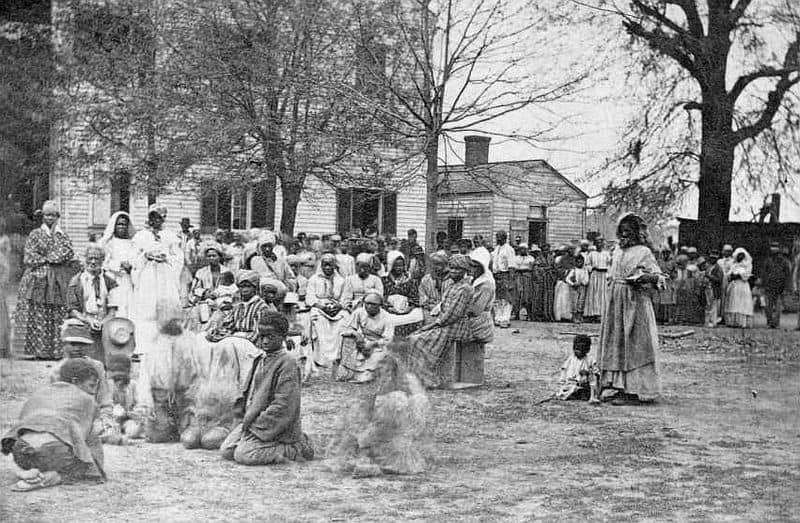
ADVERTISEMENT - CONTINUE READING BELOW
20. Slavery continued in Virginia throughout the Civil War
In 1862, enslaved workers in areas controlled by the Union Army, such as Fortress Monroe near Norfolk, were held in Union camps as contraband. While in the camps they continued to be enslaved, working at tasks assigned to them by the army. Not until the 1863 Emancipation Proclamation were they considered to be free. For the first two years of the war, Union authorities and Congress wrestled with existing federal laws regarding slavery and the wartime imperatives then present. Contraband camps arose around the main federal armies, and military orders were to accept all enslaved people who arrived at the camps. The Army was instructed to keep precise records of the slaves, from whom they escaped, and their families. Escaping slaves were given rations, assigned labor in the camps, and later afforded the opportunity to gain their complete freedom by enlisting in the Black regiments.
Thousands of Virginia slaves, as well as from neighboring states, fled to the camps near the federal armies. Washington City became another site for which fleeing enslaved people of Virginia turned to as a haven. The fleeing slaves, which the enslavers for over a century had claimed were happy in their lot, became a major concern for the Confederate and Virginia governments. Local militias served to provide security against the enslaved escaping, rather than bolstering the increasingly weakening Confederate Armies. Robert E. Lee’s Army of Northern Virginia carried a large slave contingent with it, and was forced to dispatch troops to secure it, rather than deploy them in battle. Even when Lee escaped from Richmond and struggled to Appomattox to surrender, his battered and starving Army carried its slaves with it. Slavery in Virginia ended with his surrender. But Reconstruction brought new challenges for the newly freed to face.
Where do we find this stuff? Here are our sources:
“Stables”. Article, George Washington’s Mount Vernon. Online
“Nailery”. Article, Thomas Jefferson’s Monticello. Online
“The Economy of the Enslaved in Virginia”. Article, Encyclopedia Virginia. Online
“Slave Life at Appomattox Plantation”. Article, Appomattox Plantation, National Park Service. Online
“The Dark Side of Thomas Jefferson”. Henry Wiencek, Smithsonian Magazine. October, 2012
“Sawing”. Article, Thomas Jefferson’s Monticello. Online
“William McLure: A Hired White Worker”. Article, Thomas Jefferson’s Monticello. Online
“Wash House”. Article, George Washington’s Mount Vernon. Online
“Enslaved House Servants”. Article, Encyclopedia Virginia. Online
“George Washington’s Distillery”. Article, George Washington’s Mount Vernon. Online
“Slaves for Hire”. John J. Zaborney. 2012
“10 Famous Slave Revolutions”. History Collection. Maria. July 6, 2016
“Slavery: 1825 to 1860”. Article, Virginia Museum of History and Culture. Online
“Turner’s Revolt, Nat (1831)” Article, Encyclopedia Virginia. Online
“Charles Dickens American Notes, Chapter 17”. Charles Dickens. 1842

